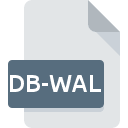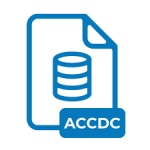.DB-WAL File Extension

SQLite Database Write-Ahead Log File
| Developer | SQLite |
| Popularity | |
| Category | Database Files |
| Format | .DB-WAL |
| Cross Platform | Update Soon |
What is an DB-WAL file?
The .DB-WAL file extension is associated with SQLite databases and stands for Database Write-Ahead Log. It’s a crucial component of SQLite’s journaling mechanism, used for improving database performance and reliability.
More Information.
SQLite introduced Write-Ahead Logging in version 3.7.0 as an alternative to the traditional rollback journal mechanism. The primary purpose was to reduce write contention and improve the efficiency of concurrent read and write operations on the database.
Origin Of This File.
The concept of Write-Ahead Logging (WAL) originated as a method to enhance the concurrency and performance of databases, particularly SQLite, which is renowned for its lightweight, serverless architecture.
File Structure Technical Specification.
.DB-WAL files contain a sequential log of changes made to the corresponding SQLite database. This log enables rapid crash recovery and facilitates concurrent reads and writes by separating write operations from read operations.
How to Convert the File?
- Windows:
- To convert .DB-WAL files on Windows, you can use SQLite management tools such as DB Browser for SQLite or SQLiteStudio.
- Open the SQLite management tool of your choice.
- Navigate to the location of the SQLite database containing the .DB-WAL file.
- Open the database file using the tool.
- You can now access and manipulate the database contents, including converting it to other formats if needed.
- Linux:
- On Linux, you can use SQLite management tools like SQLiteStudio or the command-line SQLite shell to convert .DB-WAL files.
- Open your preferred SQLite management tool.
- Locate the SQLite database with the .DB-WAL file.
- Open the database using the tool.
- Perform any necessary operations on the database, including conversion to other formats.
- macOS:
- To convert .DB-WAL files on macOS, you can utilize SQLite management tools like DB Browser for SQLite or the built-in Terminal with the SQLite command-line interface.
- Open the SQLite management tool or Terminal.
- Navigate to the directory containing the SQLite database with the .DB-WAL file.
- Open the database using the tool or command-line interface.
- Proceed with any desired conversions or operations on the database.
- Android:
- Converting .DB-WAL files on Android involves accessing the SQLite database through SQLite libraries and tools integrated into the development environment.
- Within your Android application code, use SQLite APIs to access the database.
- Implement any necessary conversion logic within your application to manipulate the database contents as needed.
- iOS:
- Similarly to Android, converting .DB-WAL files on iOS requires interacting with SQLite databases through SQLite libraries and tools provided in the iOS development environment.
- Access the SQLite database within your iOS application using appropriate SQLite APIs.
- Implement conversion logic within your application to process the database contents according to your requirements.
- Others:
- For other operating systems, you can utilize cross-platform SQLite management tools or libraries compatible with the respective platforms.
- Use these tools or libraries to open and manipulate SQLite databases containing .DB-WAL files.
- Implement any necessary conversion logic within your application or development environment to handle the database contents as needed.
Advantages And Disadvantages.
Advantages:
- Improved performance: Write-Ahead Logging reduces contention between readers and writers, enhancing the overall throughput of database operations.
- Enhanced reliability: The WAL mechanism reduces the risk of database corruption during unexpected crashes or power failures.
- Faster recovery: In case of a crash, SQLite can recover more quickly using the WAL file compared to traditional rollback journaling.
Disadvantages:
- Increased disk space usage: Maintaining a separate log file alongside the main database file consumes additional disk space.
- Complexity: Implementing and managing WAL requires additional complexity in database management systems.
How to Open DB-WAL?
Open In Windows
Use SQLite database management tools like DB Browser for SQLite or SQLiteStudio to open and view .DB-WAL files.
Open In Linux
Similar to Windows, you can utilize SQLite management tools such as SQLiteStudio or the command-line SQLite shell to access .DB-WAL files.
Open In MAC
SQLite database management tools like DB Browser for SQLite or the built-in Terminal with the SQLite command-line interface can be used to open .DB-WAL files on macOS.
Open In Android
Android applications can access SQLite databases, including .DB-WAL files, through appropriate SQLite libraries and tools integrated into the development environment.
Open In IOS
Similar to Android, iOS applications can interact with SQLite databases, including .DB-WAL files, using SQLite libraries and tools provided in the iOS development environment.
Open in Others
Most operating systems can handle .DB-WAL files using SQLite libraries or tools compatible with the respective platforms. Additionally, cross-platform SQLite management tools can be utilized to open these files on various operating systems.













